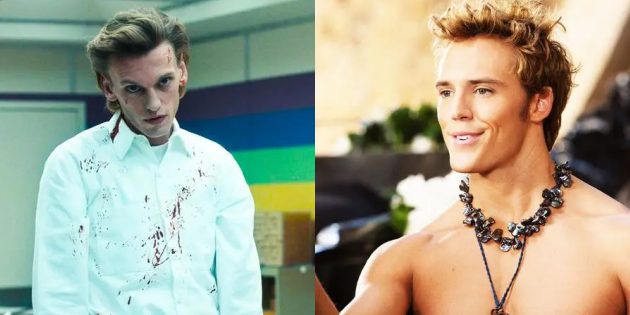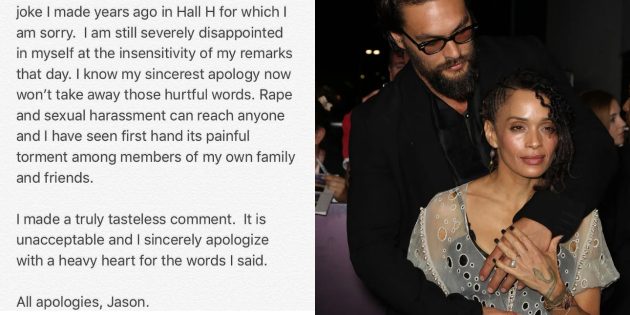The Addamses were designed for comedy, but they can still be in a tense show.About This Article
FacebookPinterestTumblrRedditChia sẻ
Anyone would have guessed that pairing Tim Burton* with the Addams family would be a match made in heaven – er – the deepest pits of hell. The new show, Wednesday, places the titular goth at a magical school near a small town in New England. The story has a lot to love, including Burton’s signature aesthetic and a cast of fascinating characters. This makes the big weakness of the show pretty darn strange: Despite the formidable skills of its Latine actors, the Addams family has lost its dark luster.
Perhaps we should have seen this coming. Moving Wednesday from a quirky side character to the hero of a whole series would be a challenge for any storyteller. However, it was still achievable. Burton is no stranger to tricky characters, and showrunners Alfred Gough and Miles Millar have no shortage of experience. They just put clichés before Wednesday Addams.
The Tricky Charm of the Addams Family Addams Family Values used character contrast to maximum effect.
Addams Family Values used character contrast to maximum effect.
The signature goth jokes of the Addams family are delightful for viewers but devilishly tricky for any story with depth and tension. I say “jokes,” but there’s really only one joke repeated in innumerable ways. The Addams family loves everything traditionally associated with evil and is repulsed by what most viewers associate with goodness.
The Addams Family got its start in mediums that didn’t require a long, engrossing story. It began as a single-panel comic by Charles Addams. In 1964, it became a sitcom with self-contained, 30-minute episodes. All it needed to do was tell funny jokes and conclude before the jokes got old.
The ’90s movies, The Addams Family and Addams Family Values, took it to the next level. That’s where the Wednesday we all love was born. Brought to life by Christina Ricci,* Wednesday in the movies represents the ultimate subversion of childhood. Instead of a playful demeanor, she wears a perpetual stony expression. She conducts childhood activities in a businesslike fashion, trading out innocence for murderous intent. In one iconic moment, she orders her younger brother, Pugsley, to get into an electric chair. He asks why, and she tells him it’s so they can play a game called “Is There a God?”
The Wrong Jokes Can Destroy Tension
The Addams family is so busy torturing and killing each other that we can only assume they have magic that makes them largely indestructible. And therein lies the first problem with putting them in a longer, serious story. How do you threaten them? If Wednesday adores being kidnapped and tortured, the possibility of her being kidnapped and tortured won’t get anyone on the edge of their seats.
To handle this, the ’90s movies start by lowering the stakes. The Addamses may not be concerned by murder, but they still care about keeping their mansion. In Addams Family Values, Wednesday and Pugsley are sent to a summer camp where the hostile camp counselors try to make them conform. While not a matter of life or death, being locked in a cabin and forced to watch children’s classics is not a good time for them.
Addams Family Values also proved how helpful it is for the Addams to face their polar opposite, so they can show some terror and disgust. They may not be afraid of dismemberment, but they are afraid of singing “Kumbaya” around a campfire. As Morticia says to the villain, Debbie, “You have married Fester, you have destroyed his spirit, you have taken him from us. All that I could forgive. But Debbie… pastels?”
When it’s finally time to bring in mortal danger, the filmmakers toned down the jokes without making the Addamses look outright afraid. That way the family could stay in character and the audience could feel concerned without impediment. Even so, this trick was easier to pull off with a couple of two-hour movies. The shorter the story is, the less the story’s tension needs to escalate, and the less time the audience has to consider discrepancies.
Evil Protagonists May Not Be Likable
The other issue with protagonists that murder and maim is, well, that they murder and maim. While it’s only for laughs, the Addams family still thinks murder is fun, and they’re unlikely to save anyone from a grisly fate when they can watch instead. Wednesday herself loves sadistic games. This is a big part of her novelty, but if done poorly, it still risks turning the audience against her.
This means a story with Wednesday must allow her to cause mayhem while keeping any of that mayhem from upsetting the audience. In the first ’90s movie, she targets her seemingly indestructible brother and shocks onlookers at a play by spewing blood everywhere. In Addams Family Values, the audience is made to hate her antagonists as much as possible.
The camp counselors act like goody-two-shoes, but they quickly reveal themselves as bigots. They are the perfect foil to bring out Wednesday’s novelty while making her look saintly. When Wednesday terrorizes them, the audience just rejoices.
Also, the camera cuts away a lot. As long as we don’t see Wednesday’s victims actually die, we can pretend it’s all in good fun. Wednesday’s secondary part in the movie is helpful here. The more time Wednesday is onscreen, the harder this balancing act becomes.
How Wednesday Changed Them The show tries to make Wednesday stand out by putting her in black, while the other students wear deep purple and black.
The show tries to make Wednesday stand out by putting her in black, while the other students wear deep purple and black.
If we’re being gracious to Burton, Gough, and Millar, we could say that their version of Wednesday is inconsistent. If we’re being less gracious, we might say she’s a cookie-cutter hero with some black icing smeared on top. To be clear, actress Jenna Ortega does a fantastic job delivering the version of Wednesday everyone wanted. But she can’t erase the mistakes in the writing.
Just in the first episode, Wednesday applauds the sadism that is high school but then explains she avoids social media because it’s a “soul-sucking void.” Shouldn’t that mean you love it, Wednesday? The writers clearly had trouble getting Wednesday to express dislike while staying in character. That’s a problem, because this version of Wednesday dislikes everything.
Wednesday no longer pursues a twisted version of typical activities. While she does unleash piranhas and blow up a statue, this is more out of angry rebellion than sadistic delight. And it’s not just cheery pursuits that earn her ire. When her parents give her a dissection kit with dead squirrels, she complains that she’d like live squirrels better. She even grumbles over a seance because she doesn’t want to talk to the dead.
And that’s the least of the show’s changes.
The Plot Pulls Wednesday in the Wrong Direction
The biggest issue is that the show’s entire plot depends on Wednesday being an altruistic, and therefore rather typical, hero. The season arc features a monster that’s attacking people, but not Wednesday. It actually saves her life. Wednesday needs a reason to solve the mystery of what and who this monster is, so I guess she cares about protecting the innocent now.
Queue line after line of voice-over where Wednesday states she likes bad things, but not things that are this bad. Or she likes bad things, but not this flavor of bad thing. Episode by episode, Wednesday is hollowed out until it’s hard to say anything about her – except that she dislikes everything, of course.
Burton, Gough, and Millar try to package Wednesday’s heroic activities as dark by making her unusually obsessed with solving these serial killings. She disregards the feelings and needs of other people in pursuit of solving the mystery. But this is typical heroic behavior. I can’t count how many protagonists have had an obsession with their job or saving the day as a character flaw. Wednesday’s a little more of an asshole about it, is all.
The altruism gets even worse when Morticia and Gomez show up for an episode. The local sheriff thinks Gomez committed murder when he was young. For some reason, Wednesday finds this upsetting. The episode is then spent trying to prove Gomez’s innocence and not just to get him out of jail. Apparently the Addams family hates murder now.
Wednesday Doesn’t Have the Right Antagonists
The Addams family has always relied on contrast with the people around them. The typical sitcom plot involved inviting reputable professionals into the Addamses’ home so they could be scandalized by the family’s lifestyle. Addams Family Values had a whole antagonistic cast of blond people in pastels.
With the exception of her court-mandated therapist, Wednesday doesn’t get the contrasting characters she needed. Much of the show takes place at Nevermore Academy, which is for magical and monstrous people who are much like Wednesday. But since Wednesday has to stand out, they’re kind of normal monstrous people, but still not normal enough to be scandalized by her.
Wednesday’s primary antagonistic foil is her principal, Larissa Weems. But while Principal Weems smiles and wears white, she’s still the champion of a group of rather monstrous students. Both Wednesday and Weems want to protect people; their only difference is that Weems also wants to protect the school’s reputation. If Wednesday were only discreet, Weems would have no problem with Wednesday’s activities. That means to get them at odds, Wednesday has to become a crusader for truth. I guess at this point she might as well be.
Then Burton, Gough, and Millar jump at the chance to create yet another oppressed mages story. While the Addams movies did specify that some members of the family had been burned as witches, they seemed quite happy and proud about it. In contrast, this storyline requires that normal townsfolk seem threatening. We don’t have much opportunity to laugh when Wednesday shocks them, because shocking them needs real consequences now.
And for what? Non-magical people make terrible antagonists for protagonists with special abilities. They’re not powerful enough; that’s why the big threat of the season is a monster. It’s also why all the villainous “normies” Wednesday faces in the finale somehow have magic. And at that point, they’re not really normies anymore, are they?
With the magical people in the show reframed as “outcasts,” viewers are treated to an unnecessary flashback of the Addamses being persecuted, plus a pile of insensitive comparisons between “outcasts” and marginalized groups in real life. Burton, you don’t know enough about social justice for this material. Please just focus on good representation.
So, sure, the show still has Addams-style goth jokes. But they are only skin deep.
How the Show Could Have Done Better Enid is one of the few characters who really contrasts with Wednesday. It’s no wonder she’s a fan favorite.
Enid is one of the few characters who really contrasts with Wednesday. It’s no wonder she’s a fan favorite.
So, what’s a better way to tell this story? Is there a better way? Yes, there is. While a character like Wednesday Addams has to be handled with immense care, other storytellers have pulled off similar challenges.
Nevermore Shouldn’t Have Been Gothic
It’s no surprise Burton wanted to stamp the school with his personal aesthetic, but, again, Wednesday needs contrast. This should have been a school filled with fairy godparents, guardian angels, and other magical beings who claim to only care about goodness and protecting humanity. This way, Wednesday can then scare off many of the junior students and teachers while leaving the more powerful ones as effective antagonists.
If Wednesday constantly disobeyed the rules, it might escalate the plot too quickly. In the current show, Principal Weems doesn’t have an effective means of punishing Wednesday without just expelling her, which would oust her from the show. Pretty soon, Weems looks ineffectual and the rules don’t seem to matter. To slow this down, I would have had Wednesday technically follow the rules while finding creative ways to subvert them. Her assignment was to inspire a human to change his ways, and the horde of poisonous spiders was inspiring, wasn’t it?
Of course, Wednesday would befriend sympathetic students who have trouble conforming. They don’t want to smile all the time, sometimes they get fed up with the humans they’re supposed to protect, and they might even be hiding some dark inclinations. The marginalization of these students will make the school look bad and begin blurring the line between good and evil. Then the white-clad antagonists can reveal themselves as extremely patronizing. They plan to help humans by “fixing” and controlling them.
This could culminate in Wednesday’s discovery that the school used to have a whole monstrous side. Maybe there were two school principals who fought. When the angelic principal won, she banned the monstrous students, closed that side of the school, and erased it from the school’s history. Wednesday could then bring it back. By this time, viewers will see this conflict as order vs. chaos. We’d just keep pretending order = good and chaos = evil by using the right aesthetics.
Of course, doing this would mean reducing the dark atmosphere of the setting for the first episodes. But trust me, audiences who enjoy a dark atmosphere absolutely love watching anything that’s full of goodness become corrupted. The trade-off would be worth it.
Wednesday Needed a Selfish Motivation
While Wednesday’s struggle against the school principal might be enough to sustain the season’s plot, bringing in an outside threat would still have been helpful. This would have taken some pressure off the school conflict and raised the stakes. The threat could even be a monster that’s killing people.
The key is that Wednesday needs another motivation for fighting it. For instance, perhaps she’s being blamed for the attacks. She doesn’t mind the additional fear and hate, but the monster’s methods are sloppy, clichéd even. She’s a true artist, not a hack like this monster. She’ll catch whoever is tarnishing her name with such embarrassing displays.
Then during her efforts to stop the monster, Wednesday just happens to save lives. She’s not trying. In fact, the unjust reputation she earns for being a savior is the scariest thing she’s encountered yet. Some people are even smiling warmly at her tricks now. It’s the worst. Of course, the monster is to blame. She will enjoy her sweet revenge.
The show could maintain Wednesday’s faux evilness through this type of circumstance and coincidence. She could also destroy property and terrorize irritating people in entertaining ways. After the asshole prom king is eaten by his own tuxedo, we could insert a line about how he’s not coming back to school and leave the rest up to the imagination.
Of course, the audience will still be concerned for the lovable side characters the monster could hurt. And as Wednesday gets close to the students who don’t fit in, she could return their loyalty by protecting them. This might have a selfish component – they’re her minions and she needs them – but it’s also okay for Wednesday to build some loving relationships. The key is to take baby steps and avoid giving her any devotion to moral principles rather than specific people.
If Wednesday has a selfish motivation and gets to act out in the right environment, we won’t need to make her hate everything for no reason.
At this point, it’s probably too late for the show to turn all these issues around. Fortunately, the mishandling of the Addams legacy hasn’t tanked it. The show is still a fun romp and a popular one at that. But if you haven’t seen the ’90s movies, give them a try. It’s a great glimpse into what the Addams family can be, and, hopefully, what they will be in the next incarnation.
P.S. Our bills are paid by our wonderful patrons. Could you chip in?








